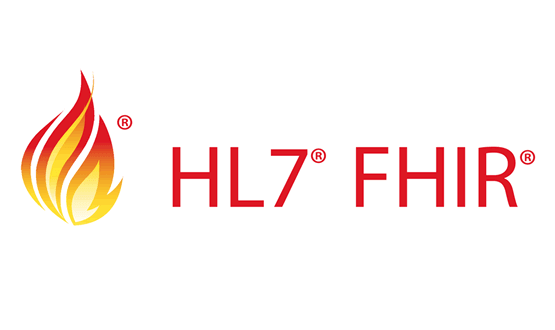Calling the FHIR brigade
- 6 September 2016

FHIR (Fast Healthcare Interoperability Resources) is rapidly becoming the global platform of choice for the interoperable exchange of healthcare data.
HL7 has been developing internationally adopted health information standards since 1987. Version 2 is still widely used for simple data transactions, such as communicating patient demographics between patient administration systems and radiology or laboratory systems.
V2 is relatively straightforward, but its flexibility means that suppliers have configured their interfaces in very different ways. So, even in a single hospital, it is not unusual to have numerous translation stages to allow multiple systems to communicate.
That problem, and the need to support clinical terminology such as SNOMED-CT, led to the creation of HL7 version 3. Version 3 set out to be rigorous and precise. It was adopted by national IT programmes in some countries for central infrastructure, but it has generally been found overly complex and therefore costly to use.
The one exception is Clinical Document Architecture or CDA, part of the V3 standard, that is continuing to be implemented in numerous countries and languages for interchanges based on letters or reports. CDA is a central part of the US ‘meaningful use’ requirements.
FHIR: built for implementation
Five years ago, HL7 ran a “fresh look” project. This initiated a new ecosystem of open standards to achieve the vision of true interoperability. From those efforts, FHIR was born. The entire specification, with links to test sites, reference materials and open source solutions is freely available (http://hl7.org/fhir/).
From the very start, FHIR was meant to serve the needs of the implementation community. Today, this group is as diverse as those individual stakeholders that produce and consume health data. In addition to healthcare providers and patients, FHIR-based solutions have been developed and piloted for public health, precision medicine and genomics, BioPharma and basic research, mobile health, and even healthcare payers.
A top priority for the FHIR development community is making FHIR easy to implement. Unlike many attempts at interoperability standards, FHIR is based upon modern web technologies.
As FHIR uses modern standards such as JSON and RESTful web services, so people with the right skills for development work are in greater supply than they are in some of the niche technologies that previous generations of interfacing have used.
FHIR relies upon a finite set of re-usable units, called Resources, which can be combined in a diverse set of circumstances to build complete and unique applications. These Resources can be applied in multiple scenarios, from clinical decision support for physicians and nurses to test results and disease management for patients and caregivers.
Moreover, FHIR is built to use the same industry-standard authentication and security technologies that are widely used in web applications and social media platforms. In partnership with the SMART development team at Boston Children’s Hospital, the FHIR “stack” of solutions has been used to enable the interoperable exchange of data directly between application modules and user-interfaces, at a “plug-in” level.
FHIR development has not slowed the enhancement of other standards platforms, such as CDA. In fact, the FHIR teams work closely with other broadly deployed standards to ensure well-defined integration and adaptation with specifications already embedded in existing infrastructures and regulatory requirements.
Coming soon, to a project near you
Around the world, both government-affiliated and informal teams of developers are coalescing around the banner of HL7 FHIR. In the US, the JASON Task Force, a joint initiative of the Healthcare IT Standards and Policy committees, developed a comprehensive report on the future of interoperable biomedical data.
In the autumn of 2014, the Argonaut Project emerged out of this body. This is a private-sector coalition of vendors, academic centers and consultancies, committed to providing the technical and financial support for the implementation of FHIR-based applications. To date, the Argonaut Project continues to drive the growth of the implementation community, particularly in the US.
The National Information Board target for health and social care in England is that “all patient and care records will be digital, interoperable and real-time by 2020”.
FHIR is an important part of enabling this goal – it is already deployed in several local health and care projects and is increasingly being adopted for national work. General practice patient records are central to the vision of digital information sharing.
GP Connect is the “open API”, based on FHIR, to allow general practice and other systems to work together. This is not just a technical benefit, but serves to open up the market and enable an innovative ecosystem of apps for patients and practitioners.
Another example is the recently developed central registry of risk indicators for FGM, which has a FHIR interface so that accredited local NHS systems can allow authorised users to view the information held.
NHS Digital has just launched a project with the Professional Record Standards Body (PRSB) and the INTEROpen group to provide clinical validation of FHIR profiles for use in the NHS and social care. This exciting initiative offers a great opportunity to align the benefits for care practitioners, patients and the industry.
Find out more (free…)
Additional support for the FHIR implementation community comes from a broad range of private-sector and non-profit organisations. In order to support greater ease and pace of adoption of the FHIR platform, the international FHIR Foundation has been created.
This programme is intended to be a home for implementers and implementations, and can be found on the fhir.org website. The site contains resources for the community to access information about best practices, tools for implementation, a sand-box for testing, and a virtual help desk. Perhaps as importantly, the site will house a repository of known implementations, both those in production and ones in a pilot phase.
There are challenges in making FHIR work for the NHS and social care. There is a risk of the implementer focus giving too much power to suppliers and technologists, but the aim of the joint work with PRSB providing clinical perspective is intended to avoid that happening.
Wide consultation with healthcare practitioners, system suppliers and NHS and social care IT leaders will help to get this right. To promote those conversations, BCS Health, HL7 UK and the PRSB have joined forces to run the UK’s second joint national event about FHIR on 28 September 2016.
The meeting is free to attend, but places are limited as it will be an interactive workshop. Full details and the agenda are available on the HL7 website.



